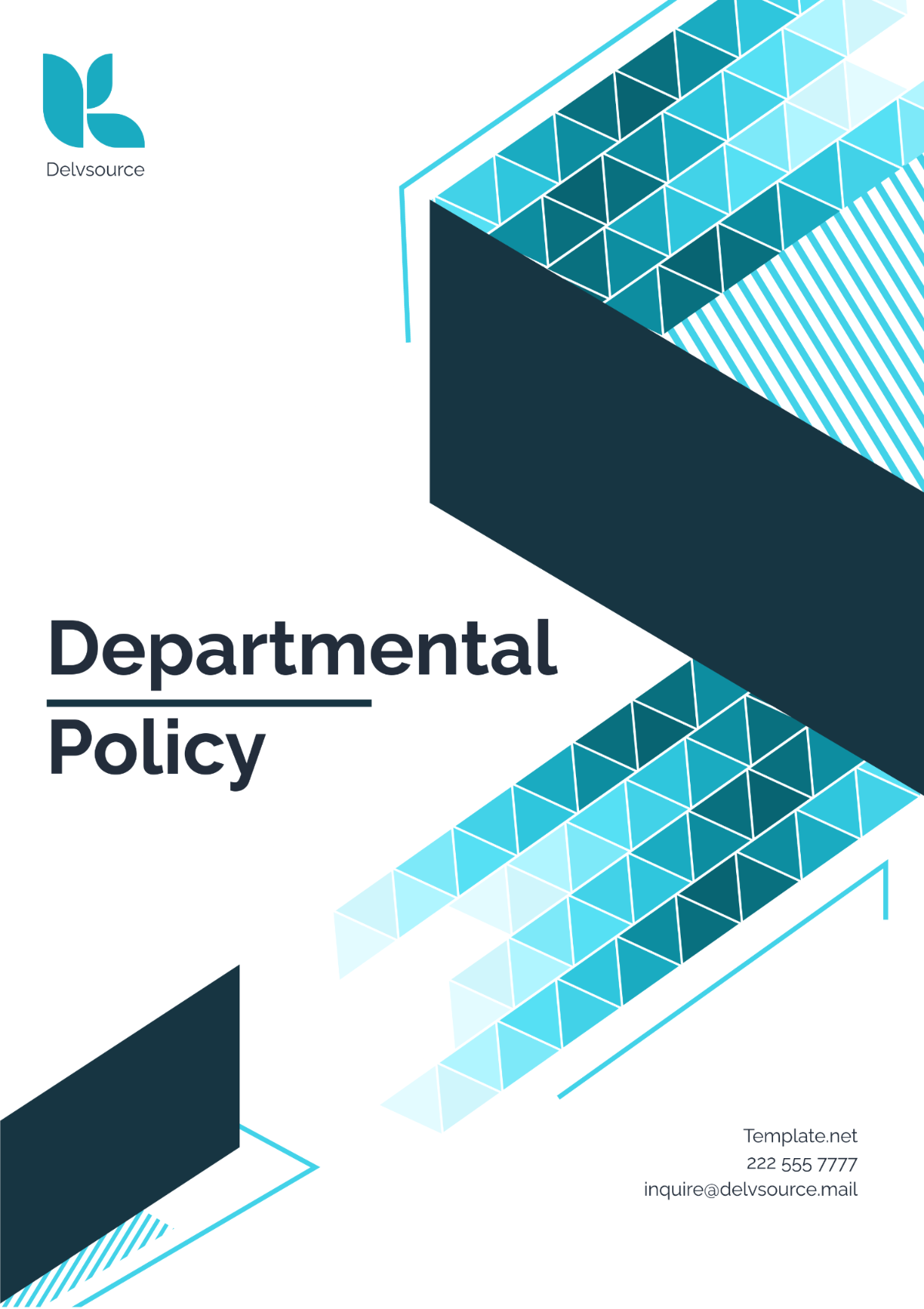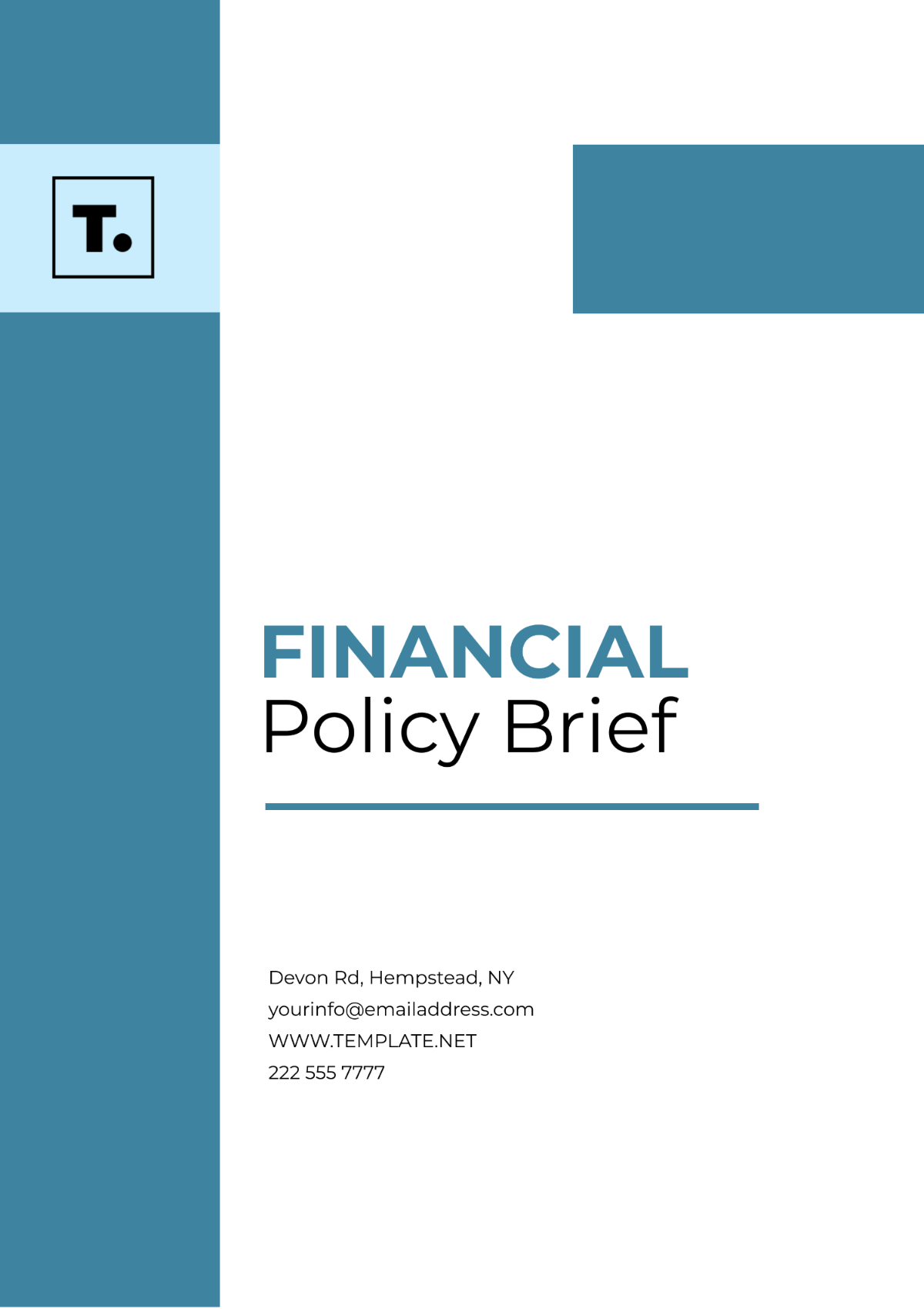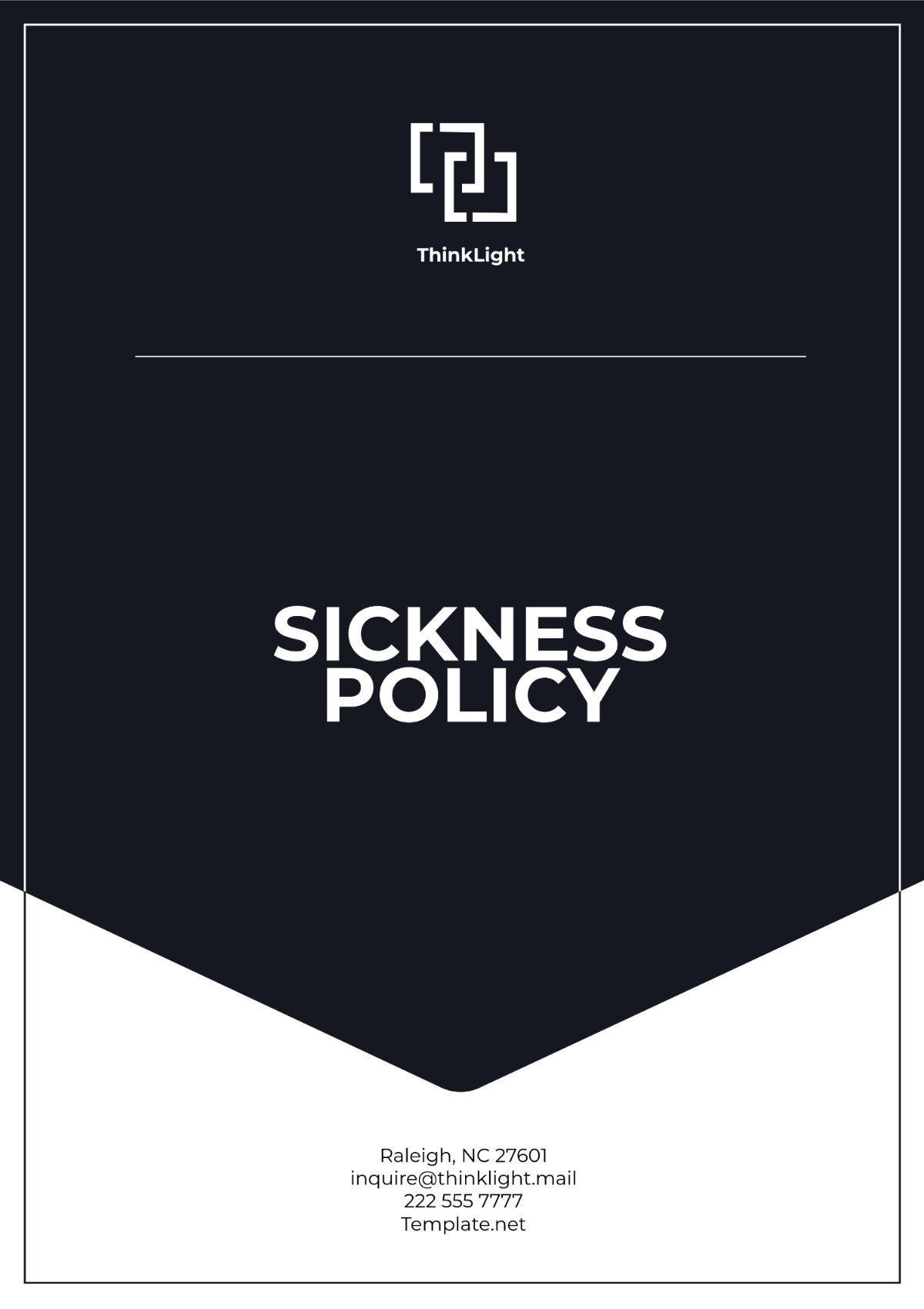Sales Policy & Procedure For Event Participation
1. Introduction
This document is designed to establish a clear set of guidelines and procedures for the [Your Company Name] sales team's participation in events. Our objectives are to enhance our brand's visibility, forge meaningful connections, and drive sales through strategic engagement in specialized events. By adhering to these policies, our team will be positioned to maximize the opportunities presented at such gatherings, contributing to our overall business growth and success.
2. Scope
The comprehensive approach of [Your Company Name]'s event participation policy and procedure is designed to maximize the effectiveness of our sales team's involvement in various events. This includes meticulously planning for the event, actively engaging during the event to generate leads, and implementing strategic follow-up actions to convert these leads into tangible sales. Our objective is to ensure that each stage of event involvement is optimized to support our broader business goals, enhance brand visibility, and drive sales growth.
Pre-event Planning
Pre-event planning involves a strategic selection of events that align with [Your Company Name]'s business strategy, target market, and product offerings. This stage is critical for setting the foundation for successful event participation. It includes identifying events that offer the highest potential for engaging with our target audience and achieving our business objectives.
Event Attendance
Event attendance focuses on the active engagement of our sales team with event attendees. This phase is dedicated to lead generation activities, utilizing well-prepared pitches and marketing materials to effectively communicate the value of our products and services. The aim is to capture the interest of potential customers and gather valuable leads for future sales efforts.
Post-Event Follow-Up
The post-event follow-up phase involves implementing efficient and timely strategies to nurture the leads acquired during the event. Through personalized communication and tailored sales strategies, we aim to convert these leads into customers, thereby maximizing the ROI from our event participation.
These guidelines are applicable to all sales team members representing [Your Company Name] at events, ensuring a cohesive and standardized approach to our event-based marketing and sales activities.
3. Procedure
Event Selection
Criteria for Selection
The selection of events is a strategic process that requires careful consideration of several factors to ensure alignment with [Your Company Name]'s overarching business goals. Events are chosen based on:
Relevance to Business Strategy: Events must align with our long-term business objectives, including market expansion, product launches, and brand positioning efforts.
Target Market Alignment: Priority is given to events that are frequented by our target audience, ensuring that our sales efforts reach the most relevant and responsive demographics.
Product Offerings Compatibility: The chosen events should cater to industries or interests that closely match our product lines, allowing for more effective product showcasing and demonstrations.
ROI Assessment
Each event is evaluated for its potential return on investment by considering:
Potential Sales: Estimations of sales that can be directly attributed to participation in the event.
Lead Generation Opportunities: The expected number of leads that can be gathered, focusing on their quality and alignment with our target customer profile.
Brand Exposure Benefits: The value of increased brand visibility among relevant audiences, including opportunities for media coverage, social media engagement, and networking.
4. Planning & Preparation:
Coordination with Marketing
A collaborative effort with the marketing team ensures that all marketing materials are not only prepared but are also consistent with [Your Company Name]'s branding and the event's theme. This collaboration includes:
Marketing Materials Preparation: Design and production of brochures, product samples, and promotional items that are tailored to the event's audience.
Branding Consistency: Ensuring that all materials accurately reflect [Your Company Name]'s brand identity, messaging, and values.
Strategic Messaging Alignment: Aligning the sales team's pitch with current marketing campaigns and messages to present a unified front to potential customers.
Sales Team Training
Preparation of the sales team is critical for maximizing the effectiveness of event participation. This includes:
Event-Specific Pitch Development: Crafting pitches that are specifically designed for the event's audience, incorporating key marketing messages and highlighting product benefits relevant to attendees.
Sales Strategy Integration: Training sales team members on integrating broader sales strategies into their event-specific pitches, ensuring that all interactions are aligned with [Your Company Name]'s sales objectives.
Role-Playing and Rehearsals: Conducting practice sessions to refine pitches, improve engagement techniques, and build confidence among team members ahead of the event.
By following these detailed procedures for event selection, planning, and preparation, [Your Company Name] ensures that our sales team is well-equipped to represent the company effectively at events. This structured approach not only enhances our brand visibility but also significantly increases our chances of generating valuable leads and achieving a positive ROI from our event participation efforts.
5. Event Day Protocol:
Customer Engagement Objectives
On the day of the event, [Your Company Name]'s sales team is primed to create impactful interactions with potential customers. The objectives are meticulously outlined to ensure that each interaction is meaningful and productive. These objectives include:
Active Listening: Prioritize understanding the needs and challenges of the customers by actively listening to them. This approach ensures that the responses and solutions offered are tailored and relevant.
Engaging Product Demonstrations: Conduct demonstrations that not only showcase the features of our products but also engage the audience and illustrate the product's value in solving their specific problems.
Responsive Sales Tactics: Utilize sales tactics that are flexible and responsive to the needs of the customer, adapting the approach as necessary to address their concerns and interests.
Lead Collection
An effective system for collecting business leads is essential for maximizing the benefits of event participation. This system includes:
Digital Collection Tools: Utilize digital tools and apps for lead collection to streamline the process and ensure accuracy in capturing contact information and areas of interest.
Qualification Questions: Incorporate a set of qualification questions during lead collection to better understand the potential of each lead for follow-up.
Immediate Data Entry: Encourage sales team members to enter lead information into the CRM system as soon as possible to maintain data integrity and facilitate timely follow-up.
6. Post-Event Follow-Up:
Follow-Up Strategy
Following up with leads after the event is critical for converting interest into sales. [Your Company Name] implements a structured and timely follow-up strategy that includes:
Personalized Communication: Tailor follow-up messages to reflect the individual interaction at the event, reminding the lead of the connection made and reinforcing the value proposition.
Multi-Channel Approach: Use a combination of email, phone calls, and social media to follow up with leads, based on their preferred method of communication.
Timely Response: Initiate the first follow-up within 48 hours of the event to ensure [Your Company Name] remains top-of-mind for the lead.
Success Metrics
The effectiveness of event participation and follow-up efforts are measured using predefined metrics, such as:
Lead Conversion Rates: The percentage of leads converted into customers, providing insight into the effectiveness of the sales and follow-up strategies.
Customer Feedback: Feedback gathered from leads regarding their experience with [Your Company Name] at the event and during follow-up, offering valuable insights into areas for improvement.
Overall Return on Investment (ROI): A comprehensive evaluation of the costs associated with event participation against the sales generated from event leads.
7. Additional Reminders & Tips
Marketing Material Stock
Maintaining an ample supply of up-to-date marketing materials for each event is crucial. This ensures that the sales team has all necessary resources at their disposal to effectively engage with potential customers and convey the value of [Your Company Name]'s offerings.
Relationship Building
The focus of event participation and follow-up should be on building long-term relationships rather than on immediate sales. By prioritizing genuine connections, [Your Company Name] can cultivate more meaningful and lasting business opportunities.
Learning and Adaptation
Every event serves as a learning opportunity. Documenting key takeaways and applying these insights to future strategies is essential for continuous improvement. This includes identifying successful tactics for replication and areas requiring adjustments.
Evaluation
A thorough evaluation of each event's outcomes is vital for informed decision-making regarding future event participation. This evaluation should encompass both quantitative and qualitative metrics, allowing [Your Company Name] to assess the overall impact and refine strategies for even greater success in future events.
By adhering to these protocols, strategies, and tips, [Your Company Name] ensures a holistic and effective approach to event participation—from engaging with potential customers on the event day to nurturing these connections into fruitful business relationships.
To systematically capture and assess the performance of [Your Company Name]'s participation in events, an evaluation table is employed. This table serves as a comprehensive tool for documenting key aspects of each event, including objectives set, success metrics established, outcomes achieved, and lessons learned. By meticulously analyzing these components, [Your Company Name] can gauge the effectiveness of its event strategy, identify areas for improvement, and make data-driven decisions to enhance future event participation. Below is an example of how this evaluation table is structured and filled out for reference:
Event Name | Date | Objectives | Success Metrics | Outcome | Learnings |
|---|---|---|---|---|---|
Tech Expo 2050 | 2050-05-15 | Generate 100 quality leads, Enhance brand visibility | Lead conversion rate > 5%, Positive customer feedback | 120 leads generated, 7% conversion rate, Highly positive feedback | High engagement at interactive product demos, Need more staff for peak times |
Annual Industry Conference | |||||
This evaluation table not only provides a clear record of [Your Company Name]'s event outcomes but also offers actionable insights for refining future event strategies, ensuring continuous improvement and a stronger return on investment.
By following these policies and procedures, the [Your Company Name] sales team will be well-equipped to effectively participate in events, maximizing lead generation opportunities, and contributing to the company's overall success. This document serves as a foundation for a structured, strategic approach to event participation, ensuring that every event is leveraged to its fullest potential.
Contact Information:
Address: [Your Company Address]
Phone: [Your Company Number]
Email: [Your Company Email]
Document Prepared by: [Your Name]

















































